Everyone likes to eat good food, but what good food means varies from culture to culture and from person to person. The Romans used to enjoy flamingo tongue as a delicacy, but that’s not eaten at all in modern times. Likewise, delicacies from some part of the world could be absolutely disgusting to other people. Here are just some of those gross foods we would not encourage you to try. Proceed at your own risk.
Balut

Also spelled Balot, this food is basically a developing bird embryo (usually a duck or chicken) eaten directly from the shell, somewhat popular in south-eastern Asia, especially Vietnam and the Philippines. By the time it is eaten, the bird has developed tiny bones, feathers, beak, etc., and the egg hasn’t even been boiled — it was just left out in the sun for a few weeks, or buried and stored in baskets to retain warmth (you can also boil it, though this is not done that often). The key is to get the temperature high enough to allow the embryo to start developing but not damage it. Before you eat it, that is. It’s often served with salt or a chili, garlic and vinegar (white or coconut sap) mixture, though seasoning can vary from area to area.
Not only is this practice pretty disgusting, but it’s also controversial for religious and moral reasons — and it poses a health hazard. For starters, the Qu’ran forbids the eating of animals which haven’t been ‘properly slaughtered’ (that’s a whole new discussion in itself, let’s not even go there), but the bigger problem is ethical.
This is a fertilized, growing embryo which has reached a level of maturity. Bird embryos that have reached greater than 50% of their incubation have developed a neural tube sufficient for pain perception, which means they can feel pain and should be treated humanely. In the UK, embryonic birds are “protected animals” once they reach this stage, and several other countries have similar recommendations. To make things even worse, the environment and temperature in which the balut is created are ideal for the development of many bacteria including Salmonella. It’s a hazardous, unethical food which should be avoided.
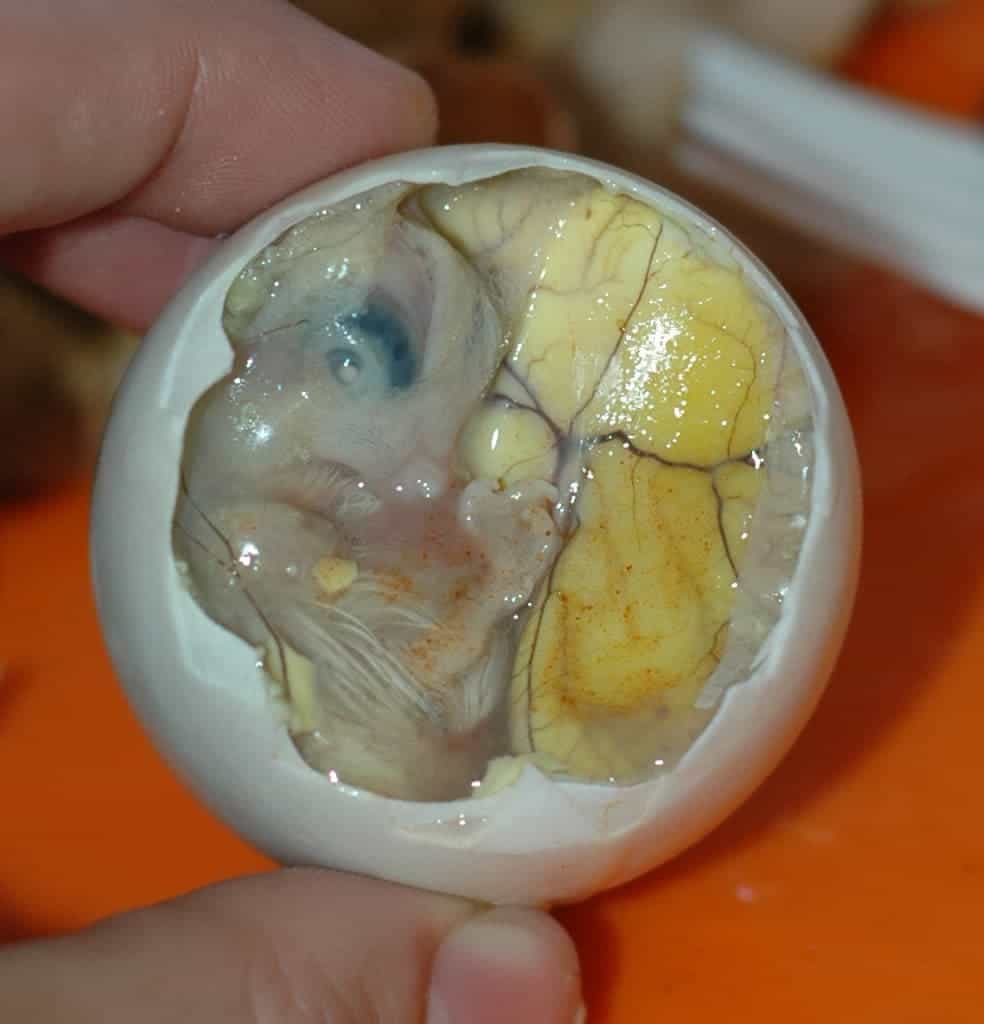
Why would people eat anything like this, you might ask? I have no idea. The popular belief is that it’s very healthy for women, especially pregnant women. There is no scientific validity to those claims.
Milt
Still with me after that one? Wow. Moving on, we’ve got some milt — genitalia of male fish (or other water-dwelling creatures) which contains sperm. Basically, sperm sacs. Yes, the genitalia is best served with the sperm inside, and this is eaten in several parts of the world.
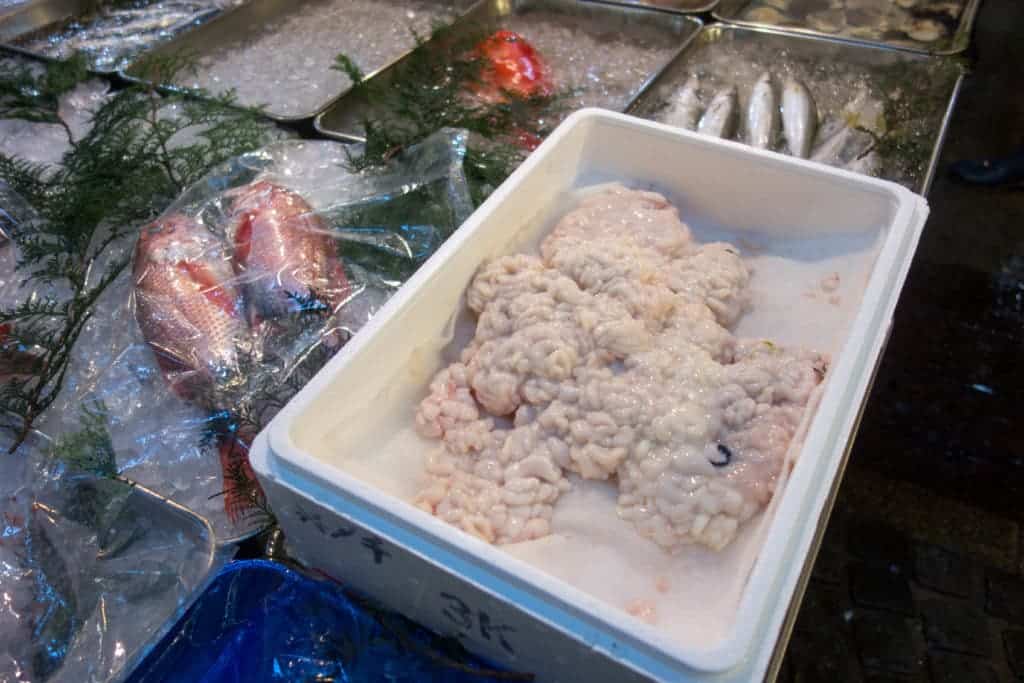
Milt plays a somewhat differing role in various cultures. In Russia, for instance, herring milt is highly appreciated. It’s typically pickled and enjoyed either on its own or with salads, while in Romania, the milt of various freshwater fish is usually fried. Sicilians sometimes use tuna milt as pasta topping (oh yeah) and the Japanese eat not only the milt of fish but also that of the squid, which is considered a delicacy. In fact, the Japanese have a special way of preparing the sperm sacs, called Shirako. They serve it both raw and cooked, and the result is a white slippery delicacy that reportedly melts in your mouth like butter. It’s an acquired taste, as I’m sure you can imagine.
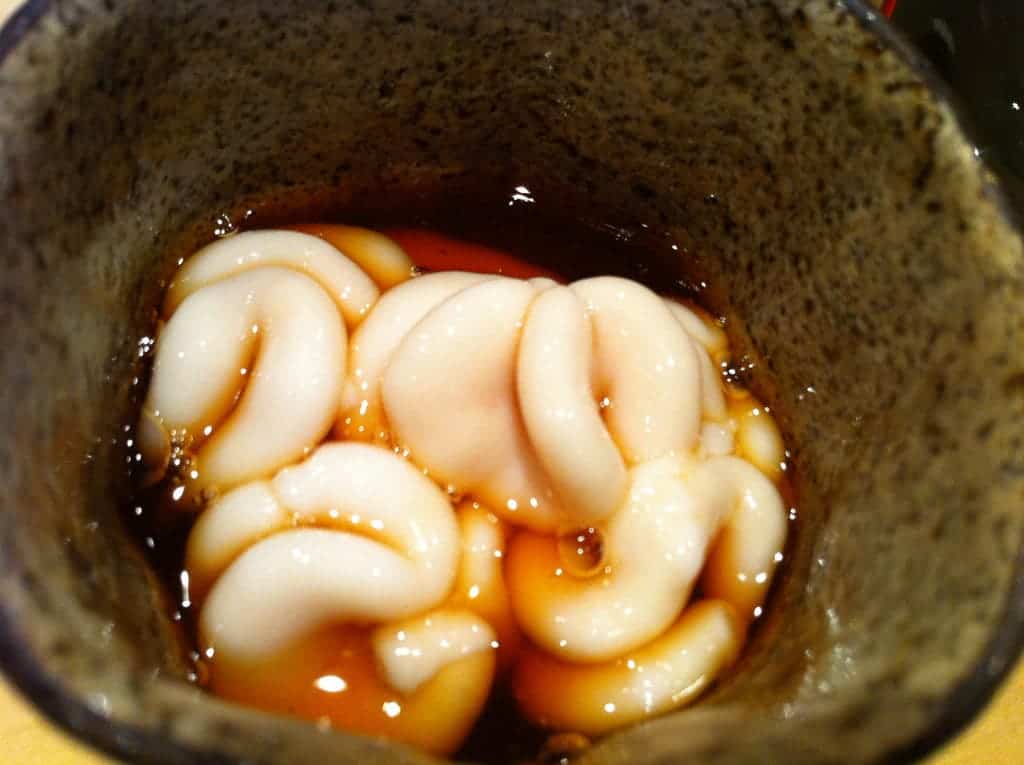
Corn smut / Cuitlacoche
Not all bizarre delicacies come from animals (although let’s face it, they usually do). Corn smut is basically a disease, a pathogenic fungus called Ustilago maydis. For centuries, it has been a bane of corn growers. It invades the plant’s ovaries, causing the corn kernels to swell up into tumor-like galls, whose tissues, texture and developmental pattern are mushroom-like. The result is a plant infected with dark fungal threads and blue-black spores, as you can see below.
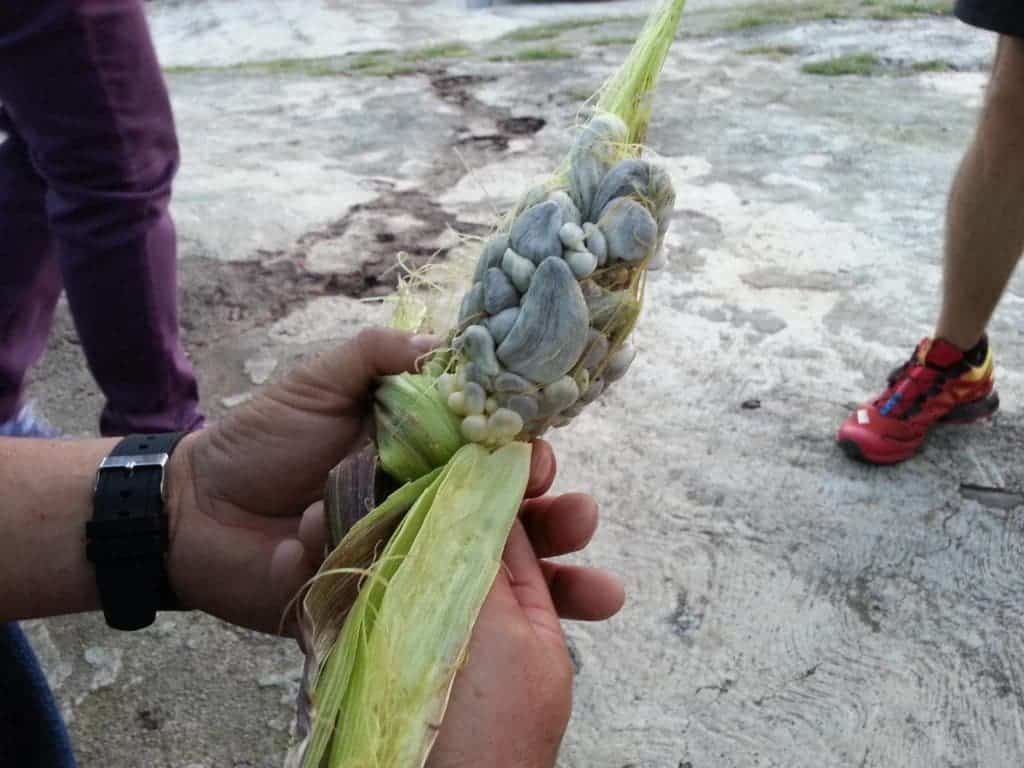
It comes as a big surprise then that the Aztecs enjoyed eating corn smut, which they called Cuitlacoche. They harvested the galls while still immature, before they dry out, and while they are still filled with spores. The Mayans used to cook it with eggs in an omelet, binding the earthy flavor to the eggs. Today, Mexicans enjoy it in a mixture called succotash, but also with tacos, quesadilla, and soups.
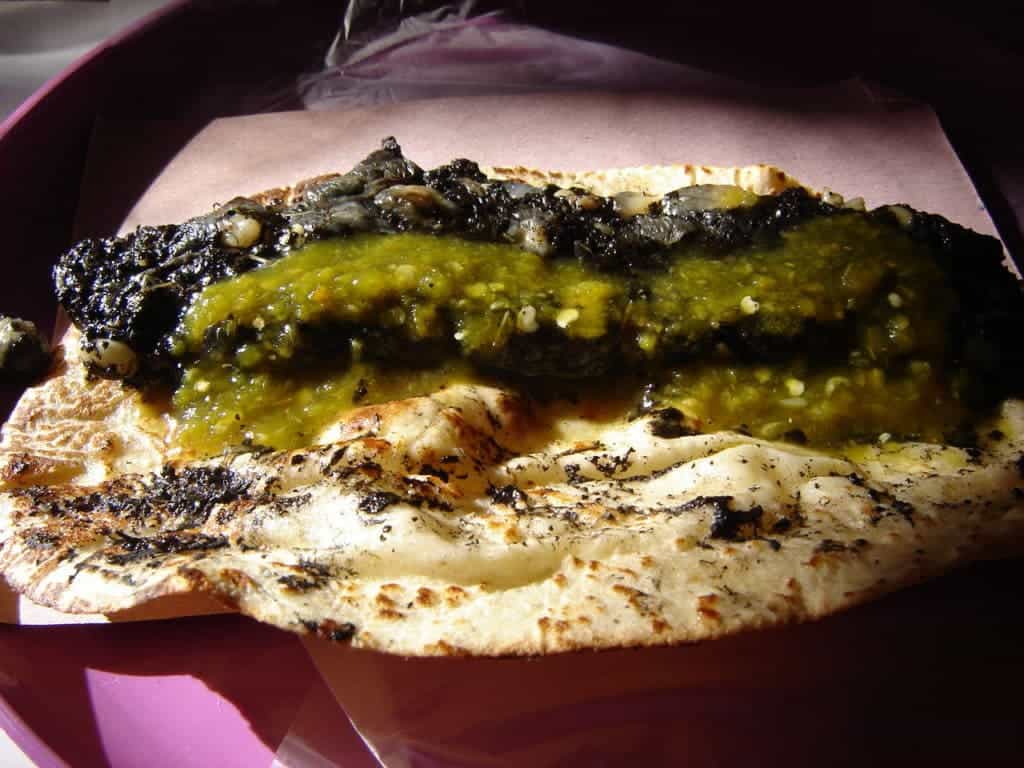
Some farmers are trying to introduce it in other parts of the world as well, and have been allowed by the USDA to intentionally infect some corn crops with the fungus to harvest it. Ironically, the USDA has spent decades trying to eradicate corn smut, only to allow it now. The project is still in its early stages, it’s hard to say whether or not it poses a risk to other crops. Out of all the foods here, this is certainly the most approachable.
Century egg
Remember the Balut from before? We’ve got something that’s just as bizarre.
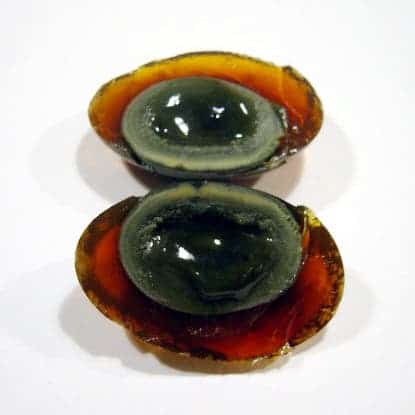
The Chinese century egg is made by preserving duck, chicken or quail eggs in a mixture of clay, ash, salt, quicklime, and rice hulls for a few months (or a few weeks at the shortest). As a result of this process, the yolk becomes dark green and gains a strong, urine-like flavor due to the hydrogen sulfide and ammonia present. The egg white turns dark brown and becomes very salty. The process also breaks down some of the odorless fats and proteins, giving birth to a number of smaller flavorful compounds… though I’m not sure it’s exactly the kind of flavor you’d want with your eggs. The pH of the egg rises to 9–12, making the egg quite basic.
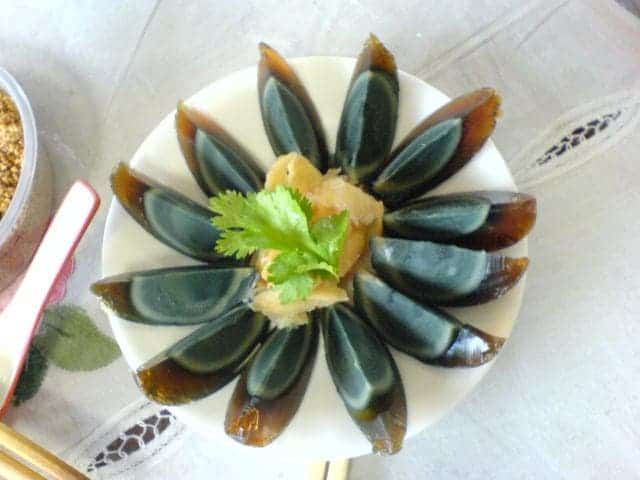
The idea is that if you coat the egg with alkaline clay, it hardens and results in the creation of a century egg instead of just spoiling. It likely developed as a method of egg preservation and not a delicacy, some 600 years ago (though some challenge this figure). Needless to say, the process of creating a century egg is delicate and can easily go wrong.
In modern times, unscrupulous sellers have used heavy metals to speed up the process, especially lead. The practice became rampant, with many production factories in China using industrial copper sulphate, contaminated with arsenic and other heavy metals and toxic chemicals. This made the eggs more translucent, reduced their odor, provided smoother texture and made the process faster. So if you do decide to test out this delicacy… be sure it’s at least heavy metal free.
Casu marzu
Would you like some cheese to go with that egg? I mean, would you like some illegal, unsafe, maggot-fermented cheese to go with that century egg?
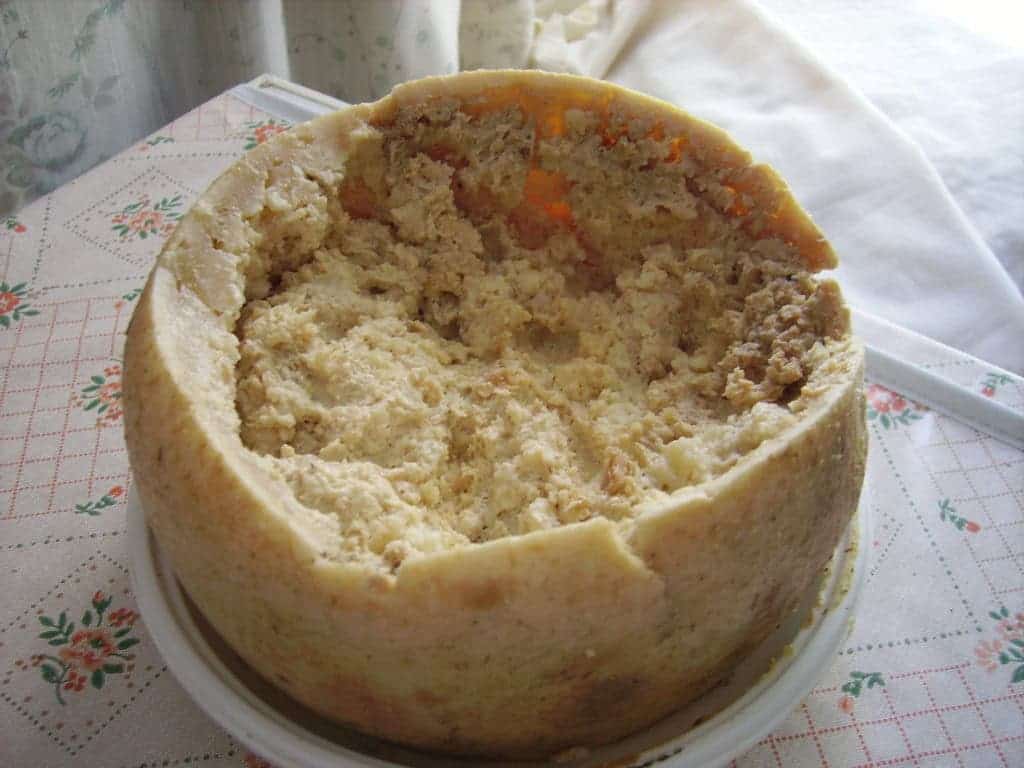
Casu marzu is a traditional Sardinian sheep milk cheese which contains live insect larvae (maggots). The cheese starts out with a relatively normal process, as it’s soaked in brine, smoked, and left to ripen in the cheese cellars of central Sardinia, Italy. But for it to become Casu marzu, makers take it out in the open and allow cheese flies (Piophila casei) to lay their eggs inside the cheese.
A female can lay up to 500 eggs at a time. After a while, the eggs hatch and countless tiny, white, fly larva emerge inside the cheese, promoting fermentation and causing many of the fats inside the cheese to decompose. But this isn’t even the worst part.
Although some people take the worms out when eating, most don’t, and some aficionados believe that the cheese isn’t safe to eat without the maggots. However, because the maggots can jump up to 15 centimeters (6 in) when disturbed, it’s important to protect your eyes while eating (or wear eye protection). The taste is putrid, although some diners have likened it to a very strong Gorgonzola, and the cheese can burn your tongue (and it will certainly burn your taste buds). Oh, and I forgot to mention that the maggots can live inside your stomach and intestines for a while and can cause dangerous infections. Due to all these, Casu marzu has been declared illegal not only in Italy but in the entire European Union. Even so, some shepherds continue to produce it in small quantities for the black market, despite heavy fines.
Fried tarantula
Unlike most foods here, this one is not really a delicacy — it started out of sheer desperation.
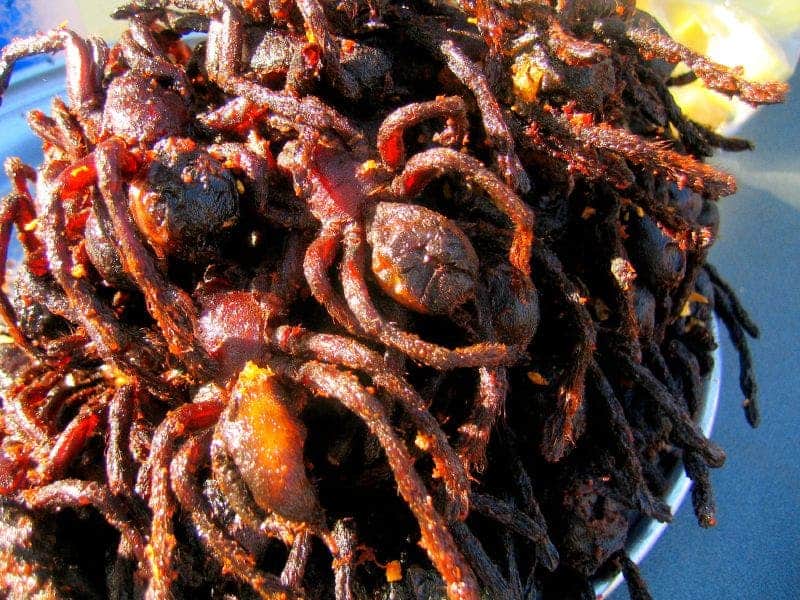
In Cambodia, especially in the town of Skuon, street vendors selling fried spiders have become a major attraction. The spiders are either bred in holes in the ground or foraged from the wild, and fried in oil, alongside monosodium glutamate, salt, pepper, and garlic. It’s likely that this practice started during the years of Khmer Rouge rule, when food was in short supply and famine was widespread in the area, but the popularity growth is recent.
The spiders are fried until their legs are stiff and the abdomen is not runny anymore… or not so runny. The legs are not very nutritious, with most of the meat being contained on the body and the head. The abdomen contains a brown paste consisting of organs, possibly eggs, and excrement. I strongly recommend against eating it.
San-nakji
If you thought the last spider wasn’t so bad, how about some octopus, cut into small pieces while it’s still alive, and still squirming on your plate?
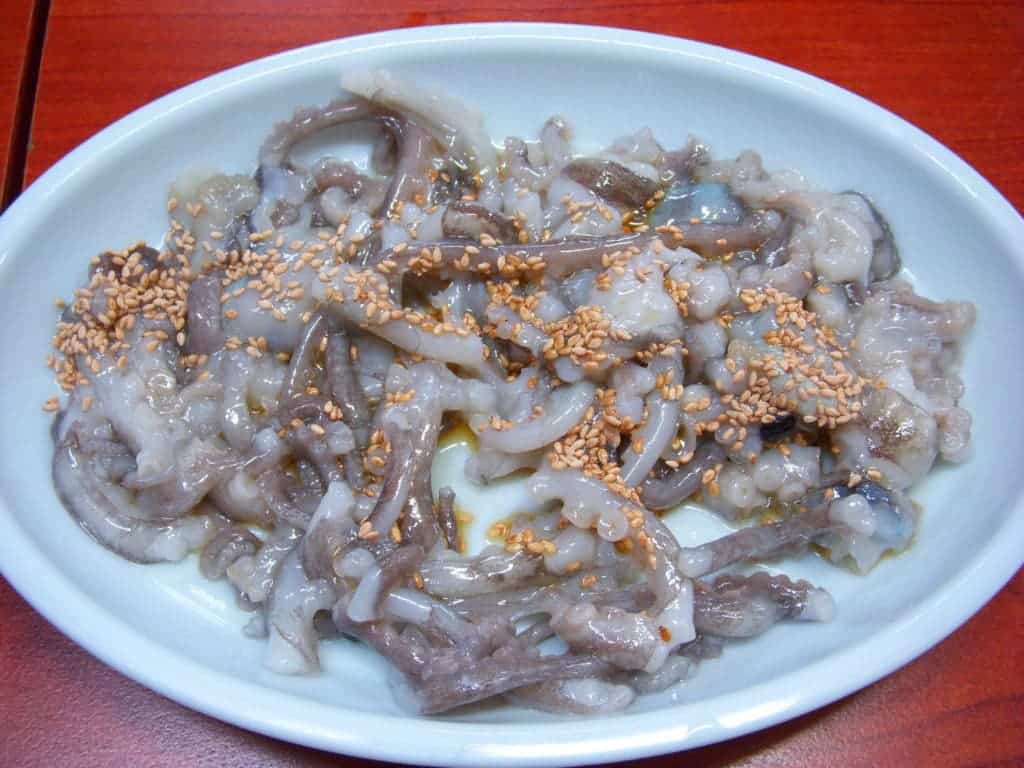
The dish consists of a type of octopus (nakji), generally baby octopus. It’s served with sesame oil, and you eat it while it’s still alive.
The octopus still has active suction cups and can stick to the mouth or throat, being a potential choking hazard. Sannakji is served in Korean restaurants alongside raw fish and sometimes alcohol, which increases the choking hazard, and several incidents of choking on Sannakji have been reported. However, the ethical concerns are much greater.
Hasma
Why not end the list with some dessert? It’s made from parts of frog reproductive system.
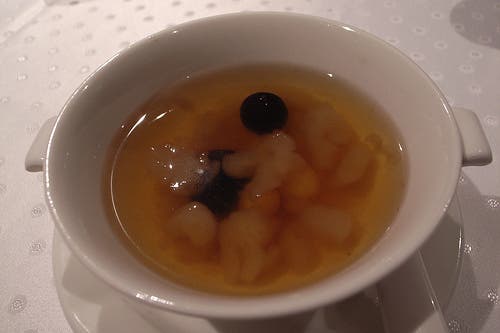
Hasma is a dessert that used to only be served to Emperors and Empresses, but now it’s easier to find. It’s named after the central ingredient (hasma), which is basically dried fatty tissue found near the fallopian tubes of frogs, dehydrated and rehydrated. It’s then double-boiled with rock sugar, creating a glutinous texture.
The sweet soup is often paired up with things like Chinese pears or lotus seeds, and although sweet, it has a slightly fishy smell. Hasma is supposed to treat respiratory symptoms and stomach ulcers though again, there is little science to back this up.


